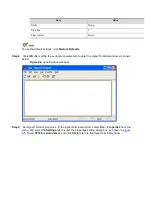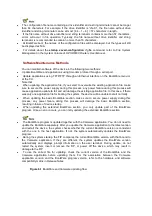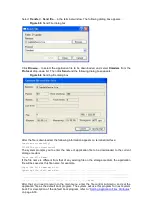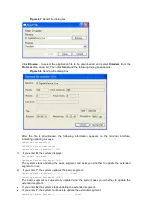
The configuration file name containing a drive identifier and a string terminator cannot be longer
than 64 characters. For example, if the drive identifier is “cfa0:/”, the file name without drive
identifier and string terminator can be at most [ 64 – 1 – 6 ] = 57 characters in length.
If the file name without drive identifier and string terminator contains more than 57 characters,
errors will occur in file operation. Typically, the file name without drive identifier and string
terminator is recommended to contain no more than 16 characters.
At BootWare boot, the names of the configuration files will be displayed, but the types will still
be displayed as N/A.
For details about the
startup saved-configuration
cfgfile
command, refer to
File System
Management
in the
System Volume
of
HP SR6600 Routers User Manual.
Software Maintenance Methods
You can maintain software of the device in the following two methods:
Update BootWare and applications using Xmodem protocol through a serial port.
Update applications using TFTP/FTP through an Ethernet interface on the BootWare menu or
at the CLI.
Note that:
When updating the application file, if you select to overwrite the existing application file, make
sure to secure the power supply during this process; any power failure during this process will
cause application update to fail and will damage the existing application file. In this case, if there
was only one application file for booting the system, the device will be unable to start normally.
When updating the basic BootWare section, make sure to secure power supply during this
process; any power failure during this process will damage the basic BootWare section,
resulting in failure of device startup.
When updating the extended BootWare section, you only update part of the BootWare
program. Once an error occurs, you can retry updating the extended BootWare section.
The BootWare program is updated together with the Comware application. You do not need to
update the BootWare separately. After you update the Comware application to the latest version
and restart the device, the system checks whether the current BootWare version is consistent
with the one in the host application. If not, the system automatically updates the BootWare
program.
During the system startup, the FIP compares the current BootWare version with that bound to
the Comware application. If they are different, the system updates the BootWare version
automatically and displays prompt information on the user terminal. During update, do not
restart the system, insert or remove the FIP, or power off the device, which may result in
damage to the FIP.
To use the correct file for updating, check the current version of the BootWare and the
Comware application before updating them. For the association between the Comware
application version and the BootWare program version, refer to the hardware and software
compatibility matrix in
Release Notes
.
Figure 6-1
BootWare and Comware updating flow
















































